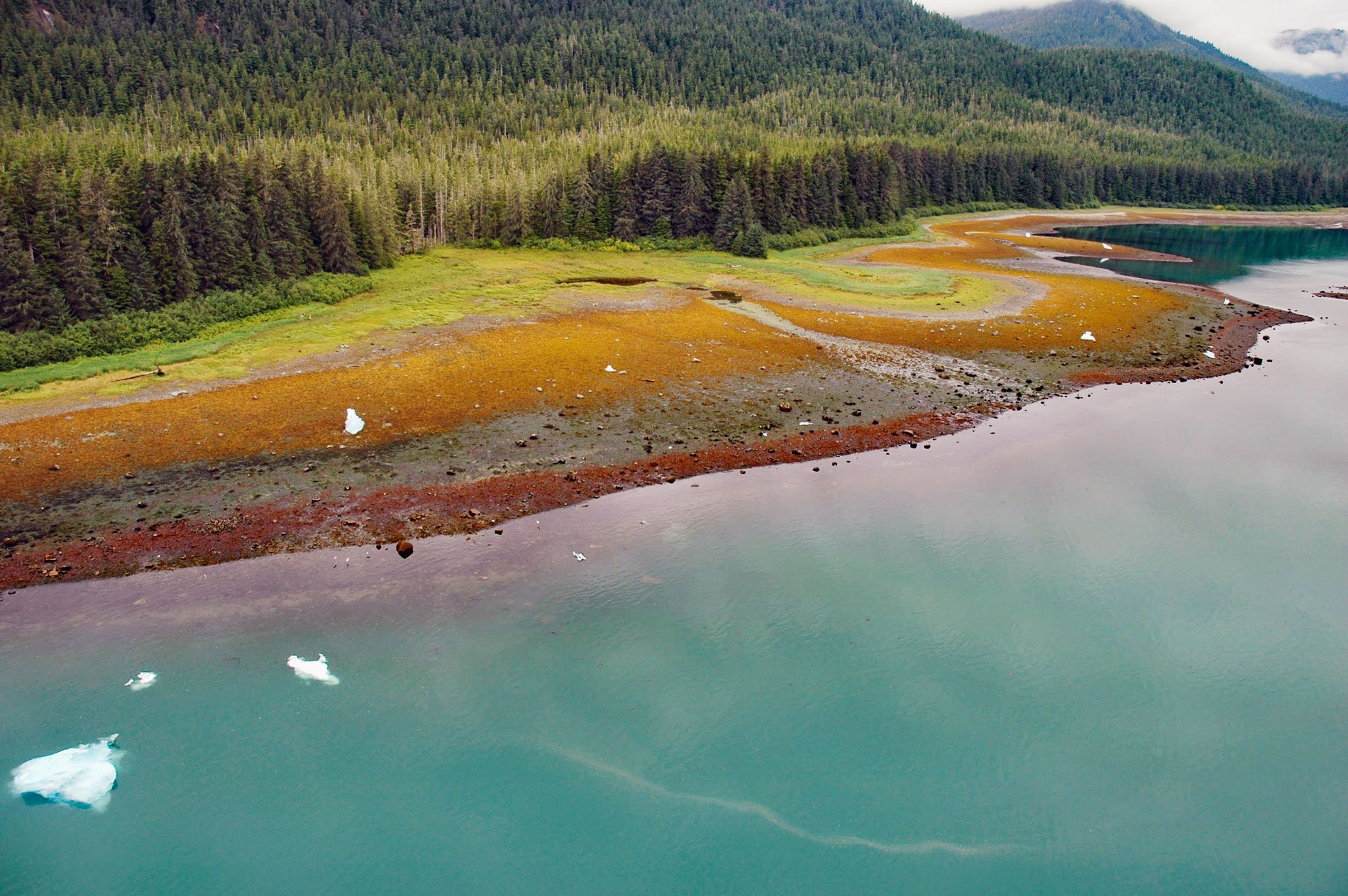Tracy Arm is a fjord in the Coast Mountains of Southeast Alaska about 85 miles (137 km) northeast of Sitka and 42 miles (67.7 km) southeast of Juneau, Alaska. The Sawyer Glacier is at the head of the fjord which then trends southwest for 28 miles (45 km) to Holkham Bay. Tracy Arm was named in 1889 by Lieutenant Commander H.B. Mansfield of the U.S. Navy, for B.F. Tracy who was the Secretary of the Navy under President Benjamin Harrison in 1889-1893. Tracy Arm is the heart of the Tracy Arm-Fords Terror Wilderness, designated by the U.S. Congress in 1980.
Tracy Arm-Fords Terror Wilderness contains 653,179 acres (264,332 ha) and consists of Tracy Arm and Endicott Arm. Both fjords are over 30 miles (48 km) long and one-fifth of their area is covered in ice. During the most recent glaciated period, both fjords were filled with active glaciers.
Tracy Arm was once filled with the Sawyer Glacier which has now receded about 30 miles (48 km). The fjord still has considerable floating ice ranging from small chunks of 1-10 cm to pieces as large as a three-story building. The largest pieces commonly strand on an underwater moraine near Holkham Bay and gradually disintegrate into smaller pieces that drift and wash ashore on the mainland. Glacial gravel forms much of the shoreline substrate and the larger cobbles and boulders form stable anchors for the attachment of rockweed that can tolerate low salinities and cold air temperatures. A fringing salt marsh of sedges lines the shore and a successional community of terrestrial grasses, alder, and spruce has colonized the uplands creating a mosaic of colors. Read more here and here. Explore more of Tracy Arm here:

